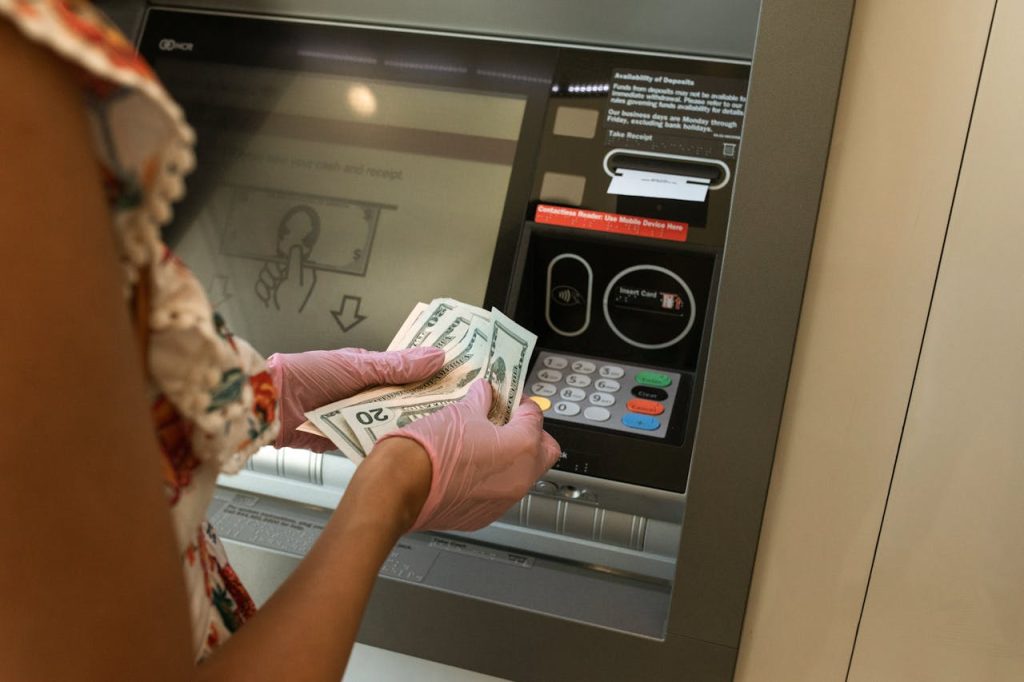
When you use an ATM, you expect a quick, private transaction. But as banks and ATM operators update their machines, some features that once protected your financial privacy are disappearing. These changes might seem small, but they can add up to a big loss of control over your personal information. If you care about keeping your financial life private, it’s important to know what’s changing and how it could affect you. Here’s what you need to watch for the next time you use an ATM.
1. Disappearing Paper Receipts
Many ATMs now offer digital receipts or no receipt at all. This might sound convenient, but it can actually reduce your financial privacy. Paper receipts let you track your withdrawals without leaving a digital trail. When you only get digital receipts, your transaction details are stored by the bank or ATM operator. This data can be accessed, shared, or even hacked. If you want to keep your withdrawals private, always choose a paper receipt when possible. If your ATM doesn’t offer one, consider how your information is being stored and who might see it.
2. Removal of Privacy Shields
Older ATMs often had physical shields around the keypad to block prying eyes. Many new machines have removed these shields for a sleeker look. Without them, it’s easier for someone nearby to see your PIN or watch your transaction. This puts your account at risk and makes your financial activity less private. If you use an ATM without a privacy shield, cover the keypad with your hand when entering your PIN. Stand close to the machine and be aware of anyone standing too close.
3. Fewer Cash Withdrawal Options
Some ATMs now limit the denominations or amounts you can withdraw. This might seem like a minor inconvenience, but it can force you to take out more cash than you need or make multiple transactions. Each transaction creates a record, making it easier for banks or third parties to track your spending habits. If you value privacy, look for ATMs that still let you choose your withdrawal amount and denominations. This gives you more control over your cash and your transaction history.
4. Increased Use of Cameras
ATMs have always had security cameras, but newer machines often have more cameras and better resolution. Some even use facial recognition or record audio. While these features are meant to prevent fraud, they also collect a lot of personal data. Your face, your voice, and your actions at the ATM can all be recorded and stored. This information could be shared with law enforcement or other organizations, sometimes without your knowledge. If you’re concerned about privacy, use ATMs in locations with minimal surveillance or ask your bank about their camera policies.
5. Elimination of Anonymous Withdrawals
In the past, some ATMs allowed you to withdraw cash without entering your account number, using prepaid cards or vouchers. Many banks have removed this feature, requiring full account authentication for every transaction. This means every withdrawal is tied directly to your identity. It’s harder to keep your spending private, and your bank has a complete record of your cash use. If you want more privacy, consider using cash-back options at stores or prepaid cards that don’t require registration.
6. Removal of Transaction Anonymity
Some ATMs used to allow you to make certain transactions, like checking your balance, without logging in fully. Now, most machines require full authentication for every action. This means every time you check your balance or view recent transactions, it’s logged and linked to your account. Over time, this creates a detailed profile of your banking habits. If you want to keep your financial activity private, limit unnecessary ATM transactions and use secure, private methods to check your balance.
7. Fewer Standalone ATMs
Standalone ATMs, not connected to a specific bank, used to offer more privacy. They often required less personal information and didn’t always link transactions to your main bank account. Many of these machines are being removed or replaced by bank-branded ATMs. This shift means your transactions are more likely to be tracked, analyzed, and stored by your bank. If you value privacy, seek out independent ATMs or use cash for purchases when possible.
Protecting Your Financial Privacy in a Changing World
ATM removal features are changing the way we manage our money. Each new feature might seem harmless, but together they can make it much harder to keep your financial life private. The best way to protect yourself is to stay informed and make conscious choices about how you use ATMs. Choose machines that offer paper receipts, privacy shields, and flexible withdrawal options. Be aware of cameras and avoid unnecessary transactions. And remember, you have the right to ask your bank about their privacy policies and how they handle your data.
How have ATM changes affected your sense of financial privacy? Share your thoughts or experiences in the comments below.
Read More
7 Crypto ATM Tactics That Leave Seniors Vulnerable
What to Do When You Need Medical Treatment but Can’t Afford It
The post 7 ATM Removal Features That Could Reduce Your Financial Privacy appeared first on The Free Financial Advisor.







